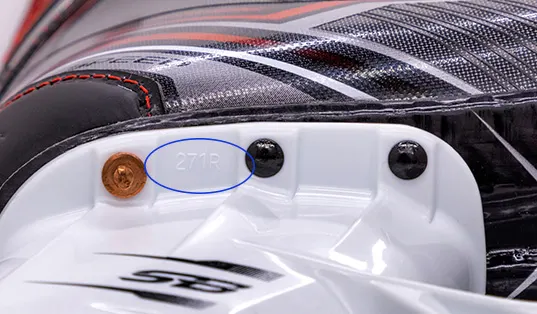Even the most reliable skates have a lifespan. Holding onto a worn-out pair can hinder your skating, increase your risk of injury, and ultimately hold you back on the ice.
Here are four key signs that it's time to trade in your current skates:
1. Your hockey skates are losing ankle support.
Hockey skates offer essential ankle support to prevent sprains and twists. However, as the boot deteriorates, it may lose its rigidity, leading to poor technique, reduced agility, and a higher injury risk. Consider upgrading if your skates feel loose or your ankles roll during turns.
Expert Tip: Moisture buildup in boots can weaken materials and support. After each use, untie the laces and open the boot to dry. Stuff them with newspaper or moisture-absorbing material to absorb sweat. Avoid artificial heat sources, and let them air dry at room temperature.
2. Your hockey skates have worn-out blades.
Dull blades can hinder your stride power, reduce your grip on the ice for turns and stops, and increase your risk of falls. Nicks and chips can snag, compromising your edge and agility. If frequent sharpening isn't improving performance, it may be time for new blades or skates.
Expert Tip: The frequency of skate sharpening depends on the player. Generally, more hours on the ice, higher skill levels, and rougher ice mean you'll need to sharpen your blades more often, as these factors can dull them faster.
3. Your hockey skate boots are breaking down.
Hockey skates experience wear and tear, resulting in cracks, tears, or damaged lining. These issues can affect comfort and performance and lead to injuries. If your skates show significant damage to the outer boot or inner lining, it's time to replace them.
Expert Tip: Wipe your boots down after skating and let them dry at room temperature to maintain their condition. Using a leather conditioner before skating can also prevent moisture buildup and extend their lifespan.
4. Your hockey skates don't fit like they used to.
A good-fitting skate is essential for performance and comfort. Over time, your feet may change, or the skates may stretch, leading to a poor fit. Ill-fitting skates can cause blisters, foot pain, and reduced control. If your skates feel loose or uncomfortable, it's time for a new pair with the right fit.
Expert Tip: Heat molding is a great option for achieving a perfect fit to break in a pair of skates. Professionally molded skates ensure you move as one on the ice. Additionally, wearing thick, moisture-wicking socks can help reduce friction and keep your feet dry, minimizing the risk of blisters and chafing.













































